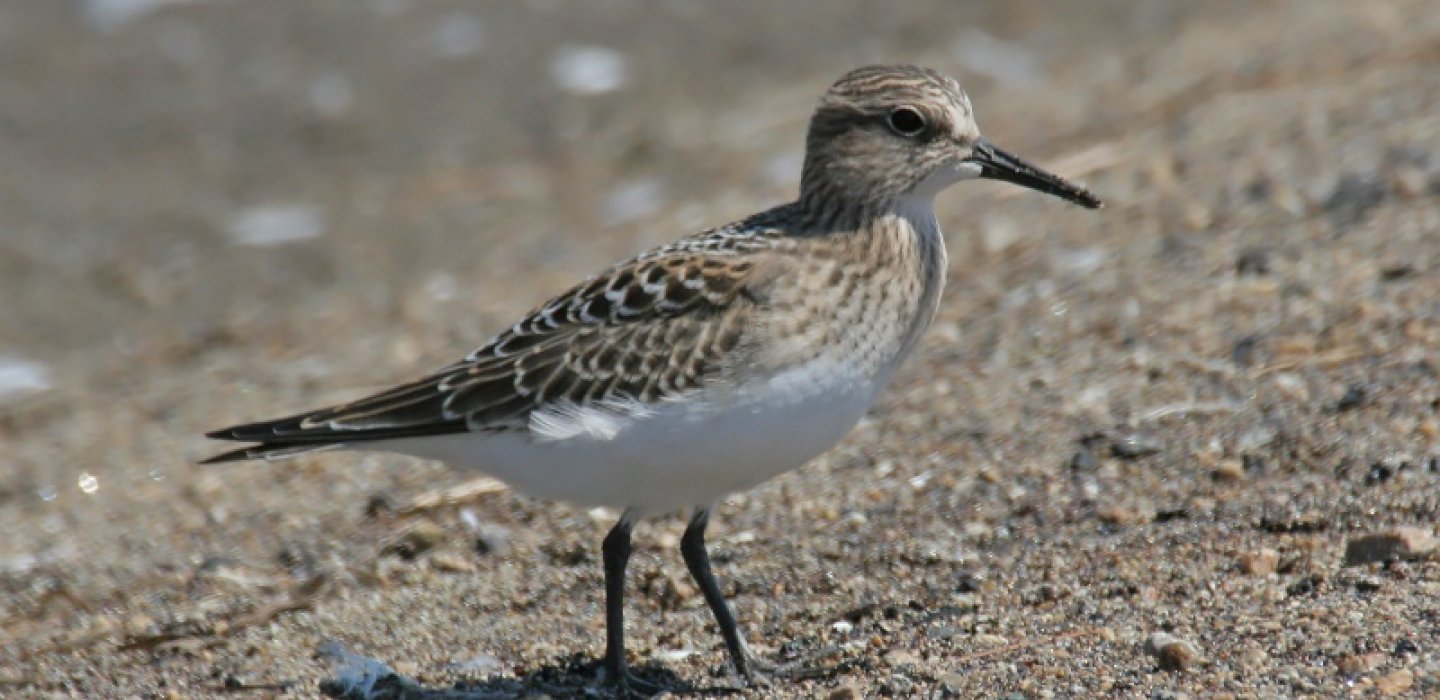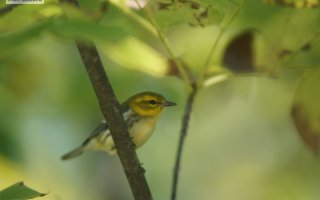Unpublished

Back to the St. Lawrence
I led a group of folks to the St. Lawrence River the other day - a follow-up on my successful trip there a few weeks ago. After all, the river itself can offer great birding at this time of year, as can the plains which stretch from it and cover the region north of the Adirondacks.
Our destination was Wilson Hill Wildlife Management Area - a site a short distance west of Massena and close to the Franklin County line. The WMA is an area of wetlands, marshes, fields, and woodlands, and we timed our trip for the 2 week period each August when the restricted areas of the WMA are open to visitors. We also timed the trip to coincide with when managers had lowered the water in East Pool - something which has been good for shorebirds this summer. In fact, a long list of species of shorebirds has been found there over the past few weeks, including Buff-breasted, Pectoral, Baird's, and White-rumped Sandpipers, as well as Red-necked Phalarope, American Golden Plover, and Short-billed Dowitcher.
The Joys of Migration Birding
One of the challenges of late summer and migration birding is that birds of interest found one day are not always around the next. It is unpredictable. But that is also one of the beauties of it - there are seemingly endless possibilities of what you can find - as we would discover on our trip.
We started along the causeway which leads to Wilson Hill Island - where most of the shorebird action has been of late. But the mudflats which had been loaded with shorebirds on my last visit were largely bare - perhaps the product of appropriate habitat being available along the edge of the river as water levels have dropped recently. A few Bald Eagles sat on the stumps overlooking the mud. The east side of the causeway, however, was more productive with a large flock of ducks which included Mallard, American Black Duck, American Wigeon, Gadwall, Hooded Merganser, Blue-winged Teal, Green-winged Teal, and Canada Goose. About a dozen Great Egrets fished in the shallows, Great Blue Herons were everywhere, a Green Heron lurked along the shoreline, and a couple Osprey cruised overhead. The flats on the east side of the pool also held Killdeer, as well as 2 Greater Yellowlegs, one of which was still in its breeding plumage.
A friend of mine had told me that he had found more shorebirds a stone's throw east at Whalen Park that morning, so we headed there where we scoped through a group of shorebirds which were congregated along the mudflats of a small island. There were lots of Lesser Yellowlegs, Pectoral Sandpipers, Killdeer, as well as Least, Semipalmated, and Baird's Sandpipers, and a Wilson's Snipe. A few Greater Yellowlegs flew in a bit later. But the views were distant, so after working through the birds we headed back to Wilson Hill where we stopped along Rt 131. There were more shorebirds along the muddy pools there - including a large number of Pectoral Sandpipers, and we were enjoying the nice views of these birds when an immature Peregrine Falcon raced through, interrupting their meal and scattering most of the birds. The falcon kept moving - apparently unable to spot a vulnerable individual - but the shorebirds kept moving too - and we took that as our cue to leave. We had picked through the shorebirds well enough by that time anyway.
A Northern Wheatear!
After a short stop at the causeway - where there had been some turnover of birds since our earlier visit - we finally headed out onto Wilson Hill Island where we could access some of the normally off-limits portions of the WMA. And we made a great find perhaps 150 meters past the gate.
I spotted a bird catch a large insect along the gravel road and then land on the ground to subdue it, giving occasional tail flicks. I could quickly see that is wasn't an Eastern Phoebe which are common and regularly tail-flick, and I jumped out of the car for a better look. My mind came to the correct identification almost immediately, but I wanted to be sure it wasn't somehow a trick of the light - we were looking into the sun which wasn't terribly helpful. So I asked folks to keep an eye on the bird, while I got out my scope for confirming views - my excitement growing as I did. It was a Northern Wheatear, a bird which breeds in the arctic, but either migrates from Alaska through Asia to Africa, or migrates from the eastern arctic in Canada through Greenland, Europe and down into Africa from there. They are rare, but spotted in the northeast from time to time. The last known one found in the North Country was three years ago along Lake Ontario.
My rush to make sure we got a good look before the bird flew proved to be needless - it sat and fed along the road quite cooperatively, and we enjoyed about 40 minutes with it before it finally moved off into a mowed field along the road. We took this opportunity to drive past the spot along the road, hoping it might come back out to the road with better light for photos - my photos of it were distant and so-so, but good enough to show it for identification purposes. But the bird never returned to the road, and a few warblers - Magnolia and Black-and-white - distracted us to move on further into the WMA. A friend whom I called about the wheatear arrived shortly thereafter, and found the bird on the back end of the field.
The End of a Great Day
The rest of our day and evening were equally splendid. We watched Pied-billed Grebes, and Common Gallinules in the marshes, spotted a Redhead with Mallards along the river, and enjoyed about a dozen Common Nighthawks hunting over the same fields which held the then-hidden Northern Wheatear. We ended our time as night descended while we stood along Wilson Hill Road - a road through the WMA which separates the East and West Pools and their accompanying marshes. We heard five Virginia Rails, an American Bittern, and a Least Bittern while the whirl of duck wings whizzed overhead in the growing shadows. It was amazing.
But we were all still gushing about our lucky find, the pretty rufous tones on the Northern Wheatear's breast and belly, its tail flicking behavior, and everything else about the bird. Finding a rare species like a Northern Wheatear displays once again that getting out at any time of year - and particularly during migration - is a chance for serendipity - you never know what you might find. And I know well what I'll find by sitting at home. Birds are moving all over the North Country right now and the next exciting find might be just around the upcoming bend. I certainly did not expect to find a Northern Wheatear a short distance beyond the WMA gate! And so I will be out again - each day, in fact. Because each day arrives with both promise and possibility, and I want to witness what they bring.
Late summer and fall offer great birding across the St. Lawrence Valley, the Adirondacks, and the entire North Country. Plan your outdoor recreation adventure and your birding trip by checking out our lodging and dining pages.







Comments
Add new comment